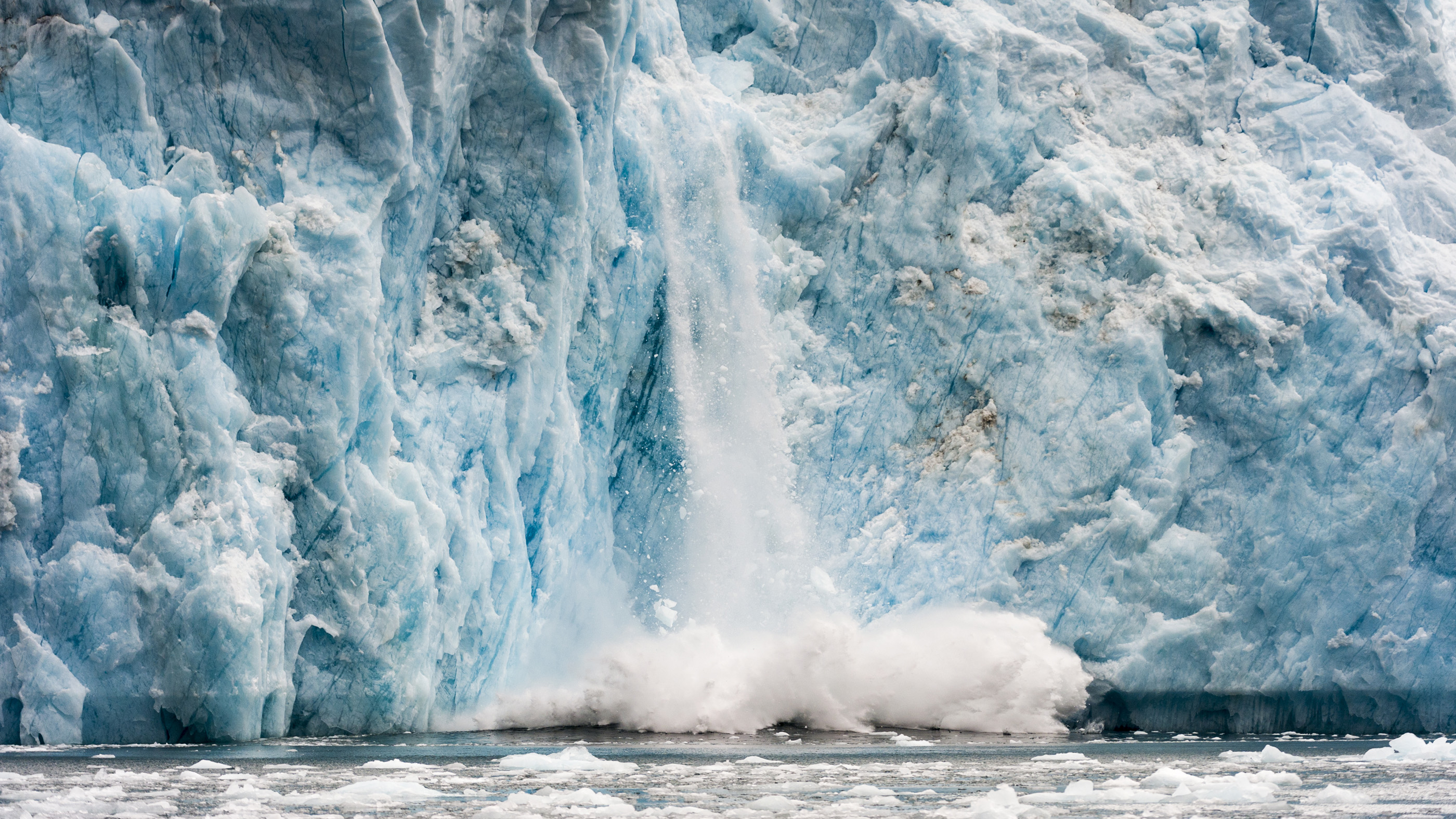Alarming collapse of Greenland ice shelves sparks warning of sea level rise
Three of North Greenland's eight enormous ice shelves have already undergone complete collapse.

North Greenland's ice shelves have lost more than a third of their volume since 1978 and could collapse with "dramatic consequences," scientists have warned.
Out of the region's eight enormous ice shelves, three have already experienced complete collapse, and the remaining five are in rapid retreat, scientists announced in a new study, published Nov. 7 in the journal Nature Communications.
Ice shelves are the parts of an ice sheet that float on the water, preventing glaciers on the land from slipping into and melting in the ocean, which would increase sea levels. If the glaciers the North Greenland ice shelves support were to collapse, sea levels could rise by nearly 7 feet (2.1 meters).
elated: Greenland's glaciers are melting 100 times faster than estimated
"A loss in the buttressing provided by ice shelves in this sector will likely trigger an increase in the discharge that could rival the largest contributors to Greenland ice mass loss," the researchers wrote in the new study. "This could have dramatic consequences in terms of sea level rise, as it is the sector in Greenland with the greatest sea level rise potential."
Greenland's ice sheet is one of only two permanent ice sheets on Earth, the other being the Antarctic ice sheet. It is roughly three times the size of Texas, covering an area of roughly 656,000 square miles (1.7 million square kilometers), according to the U.S. National Snow and Ice Data Center (NSIDC).
The Greenland and Antarctic ice sheets make up 68% of Earth's freshwater reserves, according to the NSIDC. Both have been losing mass at an accelerated rate due to climate change, and the sheets have lost a combined 7 trillion tons (6.4 trillion metric tons) of ice since 1994, according to a study published January 2021 in the journal The Cryosphere.
Get the world’s most fascinating discoveries delivered straight to your inbox.
Until now, not much melting has been observed in Greenland's north, and scientists believed the ice there was relatively stable. To investigate further, the researchers fed a combination of satellite and field observations into a climate model.
Their results revealed a chilling picture: Rising ocean temperatures had caused the ice shelves holding back North Greenland's glaciers to lose more than 35% of their total volume since 1978.
Most of the loss was driven by warm water melting the ice shelves from underneath, while calving events — where blocks of ice break away from the shelf as icebergs — also contributed to the reduction.
And if oceans continue to warm, the shelves could be pushed into a dramatic collapse, the researchers said.
Greenland's trend of accelerated melting is also occurring in other icy regions all over the world. Between 2000 and 2019, Earth's glaciers lost an average of 294 billion tons (266 billion metric tons) of mass per year, accounting for 21% of observed sea-level rise across that time period.
Another study published in 2021 in the journal Earth’s Future estimated that Earth is losing enough ice every year to cover a frozen area the size of Lake Superior.

Ben Turner is a U.K. based writer and editor at Live Science. He covers physics and astronomy, tech and climate change. He graduated from University College London with a degree in particle physics before training as a journalist. When he's not writing, Ben enjoys reading literature, playing the guitar and embarrassing himself with chess.


